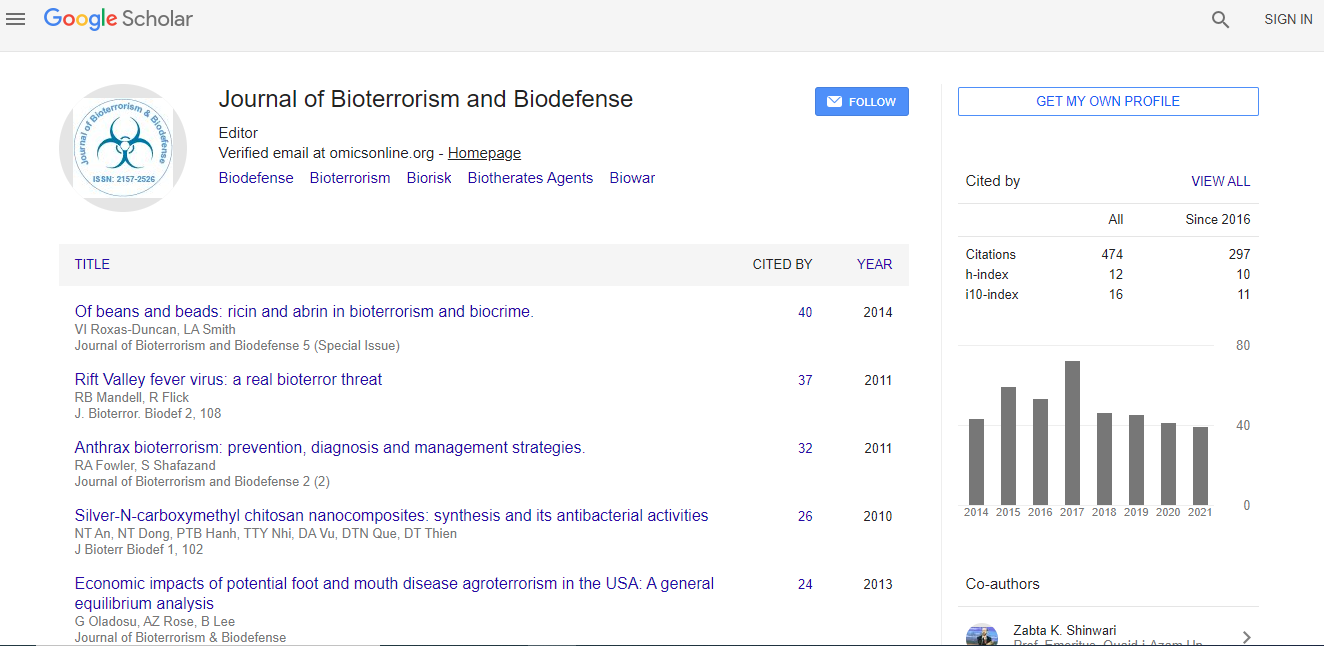Case Report
Enhanced Syndromic Surveillance for the Fourth Japan-China-South Korea Trilateral Summit 2011
Yoshiyuki Sugishita1*, Yasushi Ohkusa2, Tamie Sugawara2, Naotaka Shimatani3, Yoko Nadaoka1, Nobuyuki Kamiya1, Yoshinori Yasui2,Kiyosu Taniguchi4 and Nobuhiko Okabe5
1Tokyo Metropolitan Institute of Public Health, Tokyo, Japan
2National Institute of Infectious Diseases, Tokyo, Japan
3Okayama University Medical School, Okayama, Japan
4National Mie Hospital, Mie, Japan
5Kawasaki City Institute for Public Health, Kanagawa, Japan
- *Corresponding Author:
- Yoshiyuki Sugishita
Tokyo Metropolitan Institute of Public Health
Tokyo, Japan
Tel: 81-3-3363-3213
E-mail: yoshiyuk@gmail.com
Received Date: May 05, 2013; Accepted Date: December 28, 2013; Published Date: December 30, 2013
Citation: Sugishita Y, Ohkusa Y, Sugawara T, Shimatani N, Nadaoka Y, et al. (2013) Enhanced Syndromic Surveillance for the Fourth Japan-China-South Korea Trilateral Summit 2011. J Bioterr Biodef 4:126 doi: 10.4172/2157-2526.1000126
Copyright: © 2013 Sugishita Y, et al. This is an open-access article distributed under the terms of the Creative Commons Attribution License, which permits unrestricted use, distribution, and reproduction in any medium, provided the original author and source are credited.
Abstract
Background: When high profile events such as mass gatherings or political events are held, syndromic surveillances are enhanced to quickly detect health emergencies. Drawing on past experiences, enhanced surveillance was conducted during the Fourth Japan-China-South Korea Trilateral Summit (May 21-22, 2011). This report describes the details and results of the enhanced syndromic surveillance. Methods: Enhanced surveillance started on May 18, and ended on June 4, two weeks after the meeting, using three existing surveillance systems that operate routinely: Official Syndromic Surveillance, Ambulance Transfer Syndromic Surveillance, and Pharmacy Surveillance. The enhanced surveillance was a joint work between the Tokyo Metropolitan Government and the National Institute of Infectious Diseases. Information from the three surveillance systems was mutually exchanged and daily risk assessment on potential health emergencies such as bioterrorism and potential epidemics of infectious diseases was performed jointly. Results: During the enhanced surveillance period, the only case that required verification was one suspected measles case from the report in the Official Syndromic Surveillance. None of the cases in the Ambulance Transfer Syndromic Surveillance or the Pharmacy Surveillance required additional investigation. All three syndromic surveillance systems that were utilized for the enhanced surveillance are run routinely, and the enhancement areas were simply conducting the daily risk assessment and reporting. Therefore, the enhanced surveillance is conducted only by agreements and arrangements among members. In spite of very short notice, we were able to initiate the enhanced surveillance because the existing surveillance required no baseline or other preparation. The burden of implementation of surveillance was significantly small in comparison with the previous enhanced surveillance. Conclusions: It is possible to activate the enhanced surveillance arrangements whenever needed. We were able to make a comprehensive assessment by utilizing three syndromic surveillance systems, which we believe are useful in detecting a possible case of bioterrorism.

 Spanish
Spanish  Chinese
Chinese  Russian
Russian  German
German  French
French  Japanese
Japanese  Portuguese
Portuguese  Hindi
Hindi 